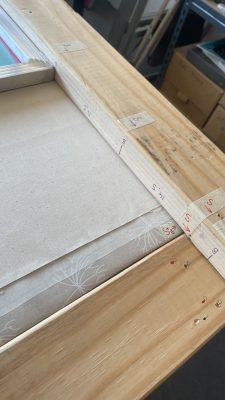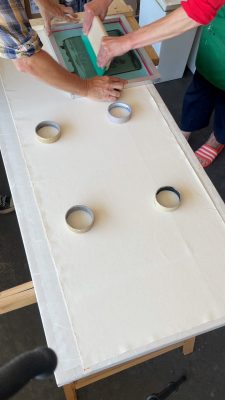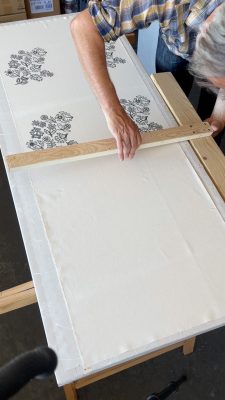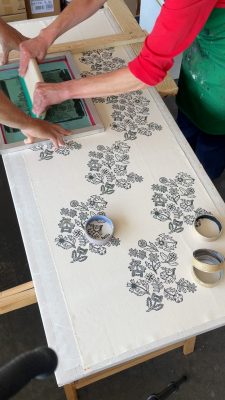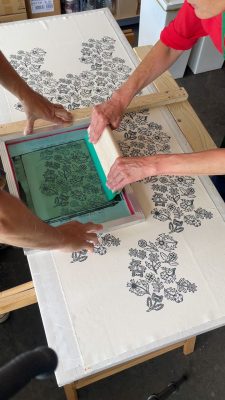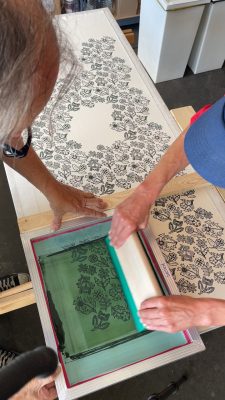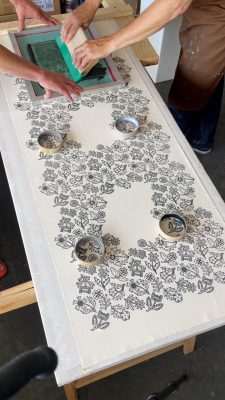With this second variant of the repeat print, we show you an example of how the screen offset on the T-bar can also be carried out in the vertical axis if you only have a small screen at hand.
In this example, too, there are no fixed values – everything is variable, but it should be planned well in advance – we do this in an Illustrator file in which not only the pattern, but also the screen is created in the correct size so that we can see whether the screen might end up in the wet ink after all…
Our pattern offset this time is 18.5cm in x and 14.5cm in y. As in the first version, we mark the x-distances on the table edge to place the T-bar there, and on the T-bar itself we mark the y-distances (labelled in blue in the photos this time, the red can be ignored).
Similar to the first variant, we can only print at every second printing position so that the screen does not get into the wet ink. In the film you can see that in the first print run we squeegee six times, then three times, then six times and again three times.
We then do the same with the second colour.
We tried to expose the filling on the second screen exactly as we did on the first screen with the outline – but that didn’t quite work. Nevertheless, we didn’t have to recreate the marks on the table and the T-bar for the screen placement of the filling, because we were able to compensate for the small deviation of the placement on the screen by sticking small layered pieces of paper with tape to one side of the aluminium frame.
By the way, we intentionally printed the outline first because there is no white in the second colour and the colour system is transparent.
Happy printing!
One more important thing about exposure:
Make sure that the motif is exposed as correctly as possible at a right angle to the screen so that the repeat is consistent and the pattern does not turn in easily.
We usually help ourselves with a rectangular frame that we print on the transparent film and which is slightly smaller than the visible screen fabric. Before we expose the screen we align it so that this rectangular frame is parallel to the aluminium edge of the screen. Later we tape off this frame because it should not be printed.


 Deutsch
Deutsch


